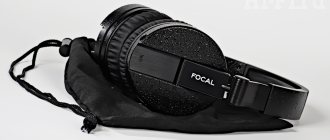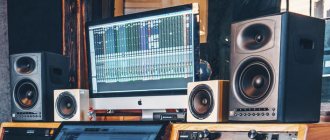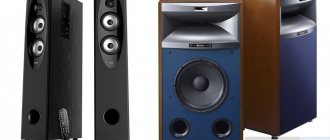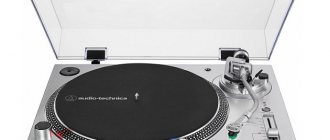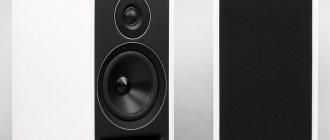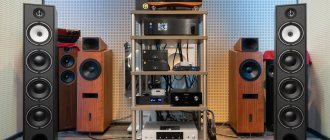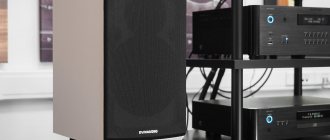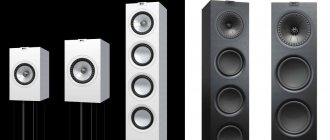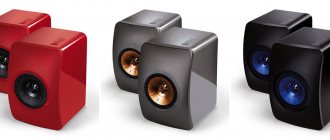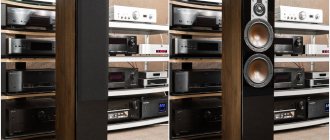The word monitor does not mean good or accurate. It comes from monitoring - control over phenomena and processes.
Monitor systems don't even aim to be accurate or true. So, night sights have an obvious problem with color rendering. The image is all green.
But consumers have no complaints about the quality of color reproduction. Moreover, both from those who shoot and from those who are shot at.
People unfamiliar with the audio monitoring market are confident that studio monitors are produced for recording studios. In their minds, the whole world is chock-full of recording studios, for which monitor systems are specially produced. On which they do nothing but record and listen to music.
In fact, studio monitors are produced for the entire range of tasks related to the control of audio streams. And this is much more than a recording studio. Starting from TV, radio... and ending with sports facilities and mobile booths that travel around villages and villages for various holidays.
Unlike household speakers, the basic requirements for professional monitor audio systems are completely different.
Over the course of 40 years, a standard for the technology and sound of studio monitors has actually been formed. Different monitors may vary slightly. But the principle of construction and the “character” of sound are always the same for all of them.
What's different about studio monitors than consumer audio systems?
The easiest way to understand this is to look at how and where this monitoring standard came from. Here it makes sense to indicate that studio monitors are divided into monitors:
- Middle
- Far field.
And this is not a formal division of what distance the listener is at. Far-field and near-field monitors perform different tasks. And they have technical differences not only in power.
A studio monitor is awesome!
A near-field studio monitor is essentially the same speaker. Simply with more strictly measured and verified parameters. On average, these acoustics are designed for listening from a distance of a meter and a half, or even closer - the field is close, after all. This is what makes it compact. As a result, such monitors rarely drop below 50 Hz in low frequencies, because the corresponding speaker in them rarely has a diameter of more than 8 inches. But listening to large speakers from one and a half meters away is somehow difficult.
If you follow the logic, monitors simply must have high fidelity of reproduction - linear frequency response in their frequency range, with minimal distortion. That is, they nominally meet the criteria of true hi-fi, right?
At the same time, if we compare the price tags of compact home acoustics and studio near-field monitors (namely, we will talk about them), we will see that most often the figures are quite comparable. Here I mean near-field monitors. Of course, there are professional mid- and far-field monitors, but they are not only larger, but also, to put it mildly, much more expensive than home options. And they are much worse suited for household use.
Focal Solo6 Be - Each of these speakers has its own 250W amplification
Modern models of studio monitors, in the overwhelming majority, are equipped with their own amplifiers. Such speaker models are called active. This means that the coordination of the amplifier and the speakers that it drives occurred at the design development stage. That is, the amplifier-emitter system operating in the speaker does this as efficiently and effectively as possible. And all other things being equal, a studio monitor is really cool.
It so happens that the author of these lines has been using studio near-field monitors for a long time and actively. At work - in a recording studio during mixing, on radio and television on sound control during editing and broadcasting. At home - as a tabletop speaker next to the computer.
You understand, there are two big differences: personal listening for pleasure - and at work, out of obligation. On the one hand, studio monitors do not allow you to relax even at home. Naturally, if they work correctly.
It’s just that after a while you begin to catch yourself making some bilious quibbles about wonderful music that you just wanted to listen to for your own pleasure. Attention sharpens - “here, in this place - it’s a complete mess,” - we rewind, listen again - “yes, exactly!!!” - and away we go.
But monitors don’t smooth out or hide anything—they even highlight imperfections. It’s clear that you won’t get any pleasure this way. So I switch to a home system with quite decent, in my opinion, floor-standing speakers.
Wow! Everything is beautiful, sweet-sounding, the bass simply caresses, the top is full of silver. And damn it, I can't hear anything! Here, in this place, there was a clear meander - and where is it? Why am I listening to this if everything is hidden from me?
Neumann monitors in the studio
Of course, I'm exaggerating, but monitors remain monitors. The professional use of these devices is also associated with such an unpleasant effect as hearing loss. After the sixth hour of working on the same piece, at a volume level that gives better intelligibility (it differs among people - on average, 80–90 dB according to a sound level meter), you understand that consciousness is at least the part of it responsible for auditory perception begins to leave you.
All this is individual, but the “drawdown” most often concerns the upper frequencies - they can be “turned up” to compensate for your own fatigue. For this purpose, many compact studios have a serious headroom. The lows may seem “over-dried” - but the situation is such that for professional equipment accuracy is paramount.
Therefore, studio monitors do not use well-known “improvements” of the bass, such as artificially raising the “tastiest” section in the absence of everything else. Indeed, this technique creates the effect of sound scale. But monitoring with such sound is a lost cause.
Adam T7V monitors in the studio
Naturally, studio near-field monitors are bookshelf monitors (I personally don’t know anything at all about floor-standing studio near-field monitors). Their place is precisely on the plane, on the table near the console - this is what they are, as a rule, “sharpened” for. And even if on stands, then closer to the ears.
Control of studio monitors, if they have built-in amplifiers, is most often done with the expectation of making settings that do not change often. If only because otherwise there is no question of monitoring. Volume control, for example, even if present in active models, is set once and for all - the volume must be adjusted from the remote control. From the source - that is, the level of the linear signal.
As for other adjustments, there can be many of them in the monitor settings. And all of them, for the most part, are designed to correct the characteristics of the room in which the monitors will be heard. At home, all this can be “twisted” at least every five minutes - but keep in mind that, as a rule, all this is located on the back wall. There are obvious shortcomings in the ease of control of studio monitors.
Choosing the right monitors
Now that you are more familiar with the design of monitors and their types, it’s worth talking about choosing wisely. Here are a few technical characteristics that matter most:
- Woofer size. The quality of low frequency transmission depends on it. Speakers that are too small cannot fully reveal the low-frequency component of the spectrum. However, if you have a small room, then using monitors with speakers larger than 7” also does not make sense, because In order to “boost” such a speaker, you will have to turn on the monitor at a significant volume, which will cause discomfort during operation.
- Reproducible frequency range. The larger it is, the better the smallest nuances of the mix will be heard, the overall sound will be cleaner and more transparent, and it will be much easier to detect problem areas.
- Amplitude-frequency response. The smoother it is, the more neutral and “honest” the sound will be.
- Sound pressure level (SPL). The higher this parameter, the greater the gain margin. For the same power, measured in Watts, a model with a higher SPL will sound louder and clearer.
- Availability of equalizer and built-in DSP. These additional features allow you to tailor the sound of your monitors to the acoustics of your room.
Of course, technical characteristics are of great importance. However, it is always better to listen to monitors once than to read about them 10 times. That is why we have tried to create all the conditions for comfortable listening to various types of monitors right in our store.
The MusicMarket assortment is quite wide and includes popular and high-quality models from manufacturers such as KRK, Adam, JBL, Yamaha, Presonus, Focal and many others. Here you can listen to monitors, instantly switching between them to make the comparison as accurate as possible. Come, play your recordings on professional equipment and choose exactly those models that you will be truly comfortable working with. And if you have any questions, our specialists will be happy to answer them and will definitely help you make your final choice. We are waiting for you every day from 10 am to 8 pm.
Make music and create perfect mixes with MusicMarket !
A studio monitor is not that easy...
Well, if the above can be considered pros, then it would be nice to balance them with cons for the sake of objectivity. Indeed, with studio monitors everything is not so rosy.
Since people are greeted by their clothes, let’s start with their appearance. Home acoustics, as a rule, are examples of modern, comfortable design. And, usually, it offers a choice of finishing options. Wood-like, black or white, and sometimes something multi-colored. Studio monitors do not shine with such variety.
Most often it is a gray or black plastic case, less often a black wooden one, and even less often a gray metal case. By the way, near-field monitors often require horizontal installation - we can recall at least the classic Yamaha NS10. For home bookshelf acoustics, this option is an incredible rarity.
JBL LSR305 active studio monitors
The front panel of monitors is often made in the form of a matte surface with smooth curves that promote proper acoustics - this is the case with more expensive models. The second option is just a depressingly flat plane. In any case, most studio monitors, once in the living room, bring into it a certain sound engineering or broadcasting, kindly business atmosphere.
And here the notorious “wife factor” comes into force - representatives of the fair sex, as a rule, do not find the appearance of studio monitors beautiful. The established opinion is that they don’t always like sophisticated examples of home acoustics - but that’s another question.
In addition, as a rule, studio monitors do not come with grills. It is believed that in professional settings, protective grilles, which can also correct design flaws, are overkill. So it’s worth paying attention to possible excesses on the part of representatives of the younger generation and pets.
How to test monitors before purchasing
So, we have looked at the main characteristics that you should pay attention to when choosing studio monitors. But the most important thing to be guided by when choosing any audio equipment is not the technical characteristics (all kinds of numbers), but your ears. If you are unlikely to be able to listen to the same sound cards in a store, then listening to a studio monitor will not be difficult. You should definitely do this! Here, in reality, everything is not as complicated as it seems. Before listening, make sure that the technical characteristics of the monitors suit you, and only then can you proceed to listening. And for listening, just keep in mind three simple rules:
- Listen only to high-quality recordings that are familiar to you . This is the only way you can fully appreciate the sound quality of your monitors.
- Listen to monitors at different volumes . Why is that? Because good monitors are distinguished by the fact that the reliability and quality of their sound practically does not change in any way depending on the listening volume.
- Trust your own intuition . If while listening to monitors you hear all the nuances of the performance, you do not notice any resonances or distortions, and the sound as a whole seems balanced to you, then these are the monitors that are right for you.
What for
Well, we went through the design. Let's move on to the most important thing - the sound. The peculiarity of monitor acoustics is that they are monitor speakers. Pardon the tautology, but monitors are designed for monitoring - that is, by and large, for tracking shortcomings.
Genelec 8010APM - compact aluminum housing, separate amplification, XLR switching.
And this is what we get as a result if we exaggerate and highlight shortcomings. This is a smooth, clear and dispassionate sound in all details and in the full range of operation of our device. If you like it, then studio monitors are just for you.
Type: passive, active, amplified
For many beginning musicians and sound producers, the type of future monitors is a complex and unclear question, but meanwhile, this is one of the most important parameters when choosing.
Passive monitors have been the most common option for many years. Passive studio monitors require an external amplifier to accelerate the audio signal to the desired level. Before entering the driver, the audio signal passes through a passive crossover and is split there, sending low frequencies to the woofer and high frequencies to the tweeter.
When choosing such equipment, you should be careful, as there are often cases when the user purchases an amplifier that is too powerful. The interesting thing is that an insufficiently powerful amplifier will also have a bad effect on the equipment. Drivers that have been overloaded due to an unsuitable amplifier are usually not covered under warranty, so the monitors will not be returned.
In general, you need an amplifier whose RMS power level per channel matches the speaker's program power level and impedance level.
It is important to understand that the sound of the amplifier greatly affects the sound of the monitor. Therefore, passive monitors and amplifier must match each other. Trying to save money on an amplifier will result in very mediocre sound.
Active monitors are in most cases preferable for musicians and sound engineers. They differ from passive monitors in two ways. The crossover has an active circuit that operates at the linear level and provides simple control. Secondly, different signals are sent to different amplifiers (Bi-Amp system, separate amplification), and from there to the drivers. This separation of systems allows for more thorough and independent control. The amplifiers in such speakers are already pre-selected by the manufacturer in all respects; such monitors are more convenient to use due to the smaller amount of required switching.
Let's take into account the features
And if you are interested in this sound option, then you should pay attention to several more characteristic properties of studio acoustics. As a rule, studio monitors are sold separately - each of them is capable of working independently.
The configuration option for computer acoustics, when all the electronics are placed in one speaker (master), and the second speaker weighs less and does not have controls (slave), is rare in studio monitors. Except in very inexpensive models.
At the same time, by purchasing a pair of monitors together, with serial numbers that are almost consecutive, we receive an additional guarantee of the identity of their sound. Although in the case of serious models it is often stated that even if two samples of the same monitor model were purchased a year apart, the sound will be the same - that’s why they are studio ones.
Neumann KH 310 A - three-way, “almost shelf”, front and rear
Seriously equipped studio monitors provide tools for adjusting not only the frequency response, but also the delay, and sometimes even the phase parameters of the emitters. Moreover, often these are not regulators, but jumper panels or electronic interfaces with a developed menu and an almost graphical display.
Before purchasing such equipment, I would recommend coming to a clear understanding of whether you are able to set it up if necessary and whether you need all this at home.
PreSonus Eris E8 studio monitors, connection - 6 mm jack, XLR, RCA
Another issue is switching. As a rule, the analog inputs of serious studio monitors are presented in the format of balanced XLR connectors. This is done for absolutely logical reasons: a balanced connection allows you to work with much longer cables, which in a studio environment is justified even for near-field monitors.
In fact, the problem of transition from an unbalanced to a balanced signal is solvable. But it is much better if your home equipment has appropriate switching. If you expect to use your monitors' controls frequently, pay attention to where they are located. Many models have at least the power button and volume knob located on the front panel. This is for you.
TOP 3 mid-price segment
Madboy BoneHead 206
Active two-way acoustics with a power of 50 W from a Chinese manufacturer. It reproduces a frequency range from 60 to 20,000 Hz, but is inferior in this indicator to the budget YAMAHA HS5 and Pioneer DJ DM-40. The main advantage over the same Pioneer DJ DM-40 is good sound. It has a protective mesh and a linear output, through which (theoretically) the acoustics can be supplemented with a subwoofer. But even so, I think the price of 24 thousand rubles is too high.
Pros:
- the presence of a protective grille;
- line output;
- sound quality;
- compactness;
- lungs.
Minuses:
- price;
- poor controls - only volume control;
- no XLR and Jack connectors (6.35 mm);
- small volume reserve.
The model is rather intended for domestic use, does not require powerful equipment, and performs well with karaoke systems. At the same time, these acoustics are not suitable for a studio, especially a professional one.
Reviews on Yandex.Market
Focal Alpha 80
Bass-reflex type studio monitor consisting of one speaker with two speakers with a total power of 140 W. Available in two colors - black and vinyl. It features a balanced sound, smooth frequency response over the entire range from 35 to 22000 Hz. Has RCA and balanced XLR connectors. Price - 28,900 rubles.
Pros:
- sound quality;
- materials and build quality;
- design;
- possibility of sound correction.
Minuses:
- short power cord;
- own noise at high volume;
- no Jack connector (6.35 mm);
- the illumination of the operating indicators (company logo) is too bright;
- goes into sleep mode at low volume.
An excellent option for a recording studio in this price segment. It produces an honest sound, but on the surface there are all musical and sound flaws. If you buy acoustics for your home, you can save money: a good alternative is BEHRINGER STUDIO 50USB: its advantages are a USB connector, it costs three times less.
Reviews on Yandex.Market
Canton GLE 436
Passive acoustics of a German brand with a power of 180 W (two speakers of 90 W each). Can be installed on a stand to save space and provide realistic sound. The reproduced frequency range is 38–30000 Hz. The sound is clear, balanced, but the bass reflex is placed back - it is important to take this fact into account when placing the acoustics. Price - 32,900 rubles.
Pros:
- sound quality;
- design;
- good materials and build quality.
Minuses:
- external amplifier required;
- not enough midrange.
Good acoustics for home. It is declared by the manufacturer as homemade. You can use it as a monitor in a home studio; professionals are better off taking the Focal Alpha 80 or one of the representatives of the premium segment.
Reviews on Yandex.Market
Excesses and compatibility
Another circumstance that is worth paying attention to is the specialized equipment of studio monitors. It is aimed specifically at studio work - partly this is something that you obviously will never use.
It would take a long time to list all the interfaces, additional installation and configuration options. For home use, they become something for which you have to pay extra money - so draw your own conclusions.
Dynaudio AIR 6 Master A+D
For example, the Dynaudio AIR 6 Master A+D precision monitors. Among their capabilities: acoustic compensation of room properties, saving and recalling presets, programming levels, their adjustment in 0.1 dB steps, built-in parametric equalizer and time delay in each monitor (setup only from a computer) and remote control of system parameters.
JBL LSR4326PAK monitors are equipped with a remote control
It is also worth paying attention to the fact that studio monitors are much less likely than home equipment to be equipped with a remote control (and sometimes it is treacherously made wired, not infrared). Therefore, it is very good if among your equipment that will work with these active acoustics, there is the possibility of automatic power supply and shutdown.
However, many monitors are ready to wake up from standby on their own when an input signal occurs. This most often solves the problem - read the instructions.
Purely acoustic features - everything is the same as everyone else's
Another point that applies to many other speakers is the location of the bass reflex port.
Active studio monitors KRK RP8G2 - bass reflex on the front panel
The case when the port is directed backwards is not the best option for bookshelf speakers, which most often include near-field studio monitors. With it, you will need freedom of maneuver in placing the speaker relative to the rear wall. And on a shelf or table. A lot has been written about this, and all problems are surmountable.
But the matter is seriously simplified when the bass reflex port is brought forward - to the front panel. Speakers without a bass reflex, in my opinion, sound more interesting - but, alas, they are much less common.
Trifonic ADAM Audio: ADAM Audio T5V monitors + T10S subwoofer
It is also worth paying attention to the fact that many manufacturers provide for the operation of their monitors complete with a branded subwoofer. Most often - purchased separately.
This option is not bad. It delivers powerful, full-range sound from a very compact system. However, in this case, problems with turning on and remote control may also extend to the subwoofer - be careful!
Closed speaker systems and systems with bass reflex.
Based on the design of the housing, all acoustic systems are divided into several types. The simplest option is a hermetically sealed housing. Such a system has a corresponding name - closed-type speakers. Among the undoubted advantages of this design is its ease of execution. But there is also a minus - the difficulty of obtaining a low limit operating frequency.
This problem was solved thanks to the advent of systems with a bass reflex. Their difference lies in the presence of an output hole (phase inverter), which is located on the front or rear wall.
Today, the vast majority of speakers use a case with a bass reflex, which is explained by the ease of operation and much smaller size compared to systems in closed cases.
Signal source
It’s very nice if the DAC, from which the signal is usually supplied to our studio monitors, has pre-amplifier functions. That is, there is at least an output adjustable in terms of signal range. Of course, the optimal solution is to use a full-size preamplifier. At a minimum, with an input selector that complements the general volume control.
NAD C 658 DAC/Preamplifier/Streamer
It can have a built-in DAC and phono stage and provide streaming capabilities. Now such devices are appearing more and more often.
Popular monitor models
I will conditionally divide the models available on the market into two types:
Budget control monitors (up to $500 each)
This group includes good solutions for a budget home studio (balanced according to the well-known price/quality ratio), optimal for beginning producers and musicians who generate ideas and play more than worry about the quality of their sound: Eve Audio SC207, JBL 305P, Focal Alpha80, KRK RP7, KRK 10S2 (subwoofer), Mackie MR8 24, Tannoy Gold 7, Yamaha HS7
Possible options...
A separate topic for discussion that evokes respect for the owners of these devices are vintage studio monitors.
Legendary, built for the BBC, LS3/5A from Falcon Acoustics
We are talking about models such as the LS3/5A created for the BBC in the middle of the last century or, for example, samples of coaxial Tannoy, also produced in the 60-70s of the last century.
Tannoy Gold Series Monitors
These speakers (by the way, as a rule, they are passive - that is, an amplifier is needed) are valued to this day. It is not for nothing that they are produced in the form of authorized replicas or simply copied by various manufacturers.
Acoustic Energy AE1 Active is the successor to the AE1 model. According to ideology - monitors
On the other hand, among the studio monitors that can be recommended for home use, there are also those that cannot be fully attributed to this class of devices.
Here we can recall, for example, the famous English brand Acoustic Energy - the AE1 model was produced both as a studio monitor (initially) and as home acoustics. And without any special design differences. Although such options (and they are not uncommon) are also good because in the “home” versions the same “wife factor” is taken into account.
Kii THREE - 6 x 250 W in each of the bookshelf speakers (at the same time - studio monitors). With the optional BXT module, they become a pair of active floorstanders with sixteen additional drivers for a total power of 7,000 W
Universal and, for example, the wonderful Italian development Kii THREE, which also has a dual purpose and is equipped depending on it. These speakers can be retrofitted with subwoofer bases to become reference tower speakers with impressive power.
Either way, a good studio monitor can get almost everything out of a decent recording. And as a result, abandon low-quality sources and tracks. That is, the one who listens to a studio monitor is, in my opinion, a true audio maximalist.
Not only that: it has been noted that owners of studio monitors “with experience” have their own, more strict attitude towards sound. However, the attitude towards sound is a matter of taste, and studio monitors here, as a rule, should be absolutely neutral. That is, it has nothing to do with it. That's why they are studio monitors.
What does a two-way monitor mean?
In two-way
The acoustics have two speakers. One serves to reproduce sound at low and medium frequencies, and the other at high frequencies. Accordingly, in a three-way system there are three speakers: one for each frequency range.
Interesting materials:
How is a Pipel biopsy performed? How to carry mascara on a plane? How to jump in DS 2? How to comb your eyelashes after applying mascara? How to Roll out puff pastry from the store? How to promote a blog on Instagram? How to open a presentation? How to pay with a fitness bracelet? How to melt granulated wax? How to arrange doors in an apartment?
